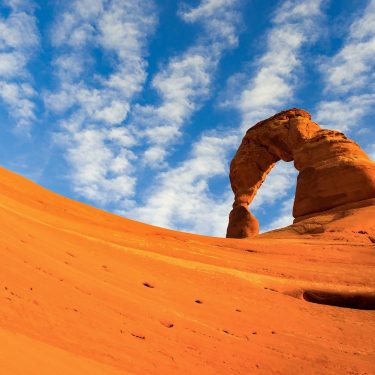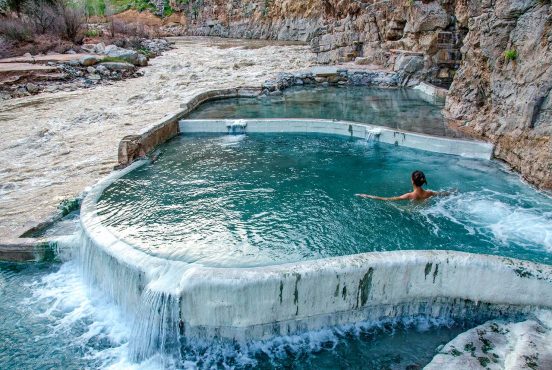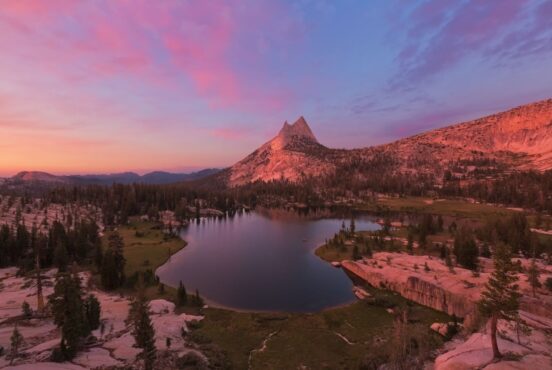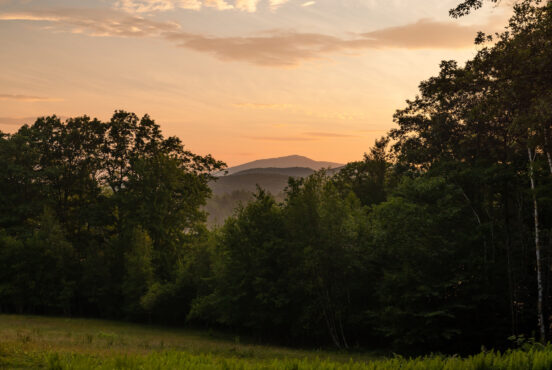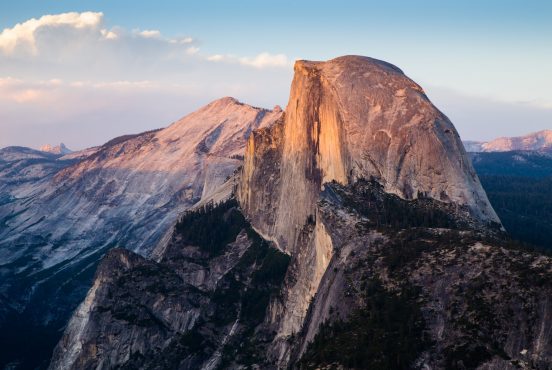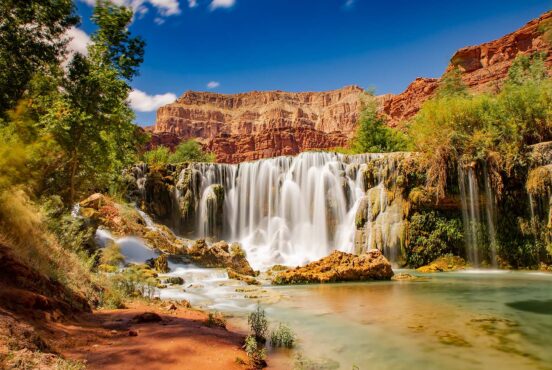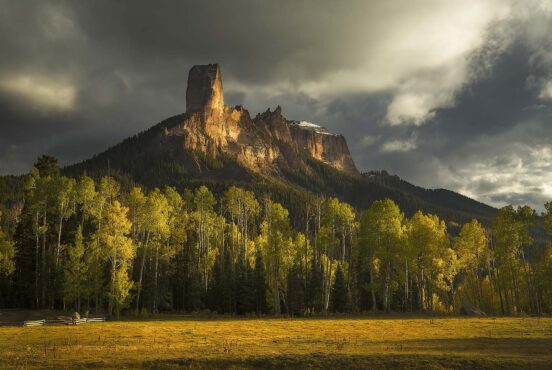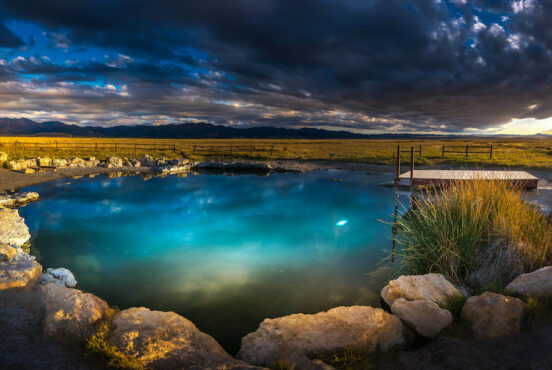Despite being in one of the most touristy towns in Utah, Arches National Park is a true natural marvel no matter what time of year you visit.
Unless you literally want to cook an egg on a sidewalk (which you most definitely can here), you may want to avoid summer in the land of scorching red rocks and zero shade. But hey, it’s your decision; summertime in Arches National Park has its perks, too.
It all depends on what your body (and possibly mind) can tolerate. Would you rather hike in your bathing suit and brave the crowds? Or are you willing to put on your thermals to snap a photo without a soul in sight? That’s up to you, but the tips below should make it a bit easier to decide when to visit Arches National Park.
Related Read: 6 Epic Glamping Destinations Near Moab, Utah
Travel Tips for Arches National Park
- There are a multitude of places to stay around Arches. If you’re looking for some free options, try these spots. If a little more comfort (and less sand/heat) is your prerogative, we suggest these airbnbs in and around Moab.
- No matter the time of year you visit Arches, the weather is ever-changing; be prepared. Excessive heat with little shade defines summer. Exposure and high winds are a real danger in winter.
- Make sure you bring and drink plenty of water, especially if you aren’t used to dry areas. You dehydrate much more quickly. A rule of thumb is to drink at least one gallon of water per day.
- Monsoon season typically occurs July, August, and into September, which can cause flash floods. Keep an eye on the weather in and around Moab.
- Services are limited in the winter inside the park, but Moab is still mostly open. Most of your opportunities to grab food and water will be before you enter the park gates.
- Expect long wait times in the summer and crowded parking areas. You’ll have a much better time if you plan to be patient.
Best Time of Year to Visit Arches
Regardless of season, Arches National Park has its own special beauty. Its red rock and blue skies create an incredible backdrop for photos year-round. But Arches does offer a different experience throughout the seasons, so the best time to visit Arches may depend on what activities you’re interested in. Here’s what you can expect of each season.
Autumn: The Best Time for Guided Hikes
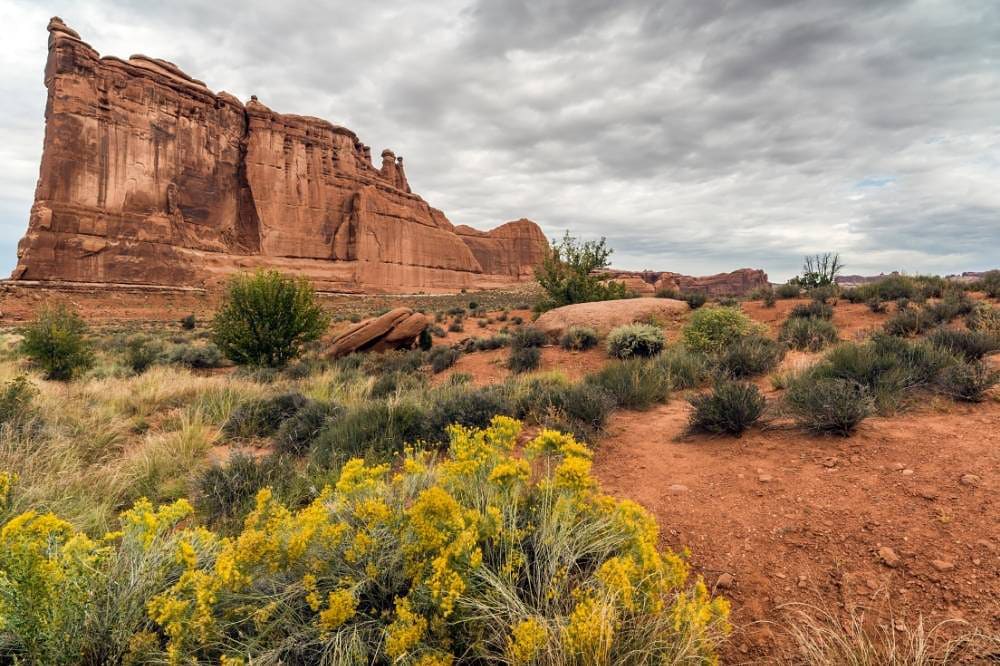
Autumn, although a shoulder season, is still one of the busiest times to visit the park. Average temperatures are usually between 70-80 degrees Fahrenheit. Being outside in the middle of the day isn’t just tolerable, it’s downright comfortable. But because of these cooler temperatures, the park is often overrun with tourists avoiding the summer season. It’s no secret that fall is one of the best times to visit Arches NP.
With that said, kids are back in school so the roads and trails will likely have less families. That means the ranger-led tours won’t be filled with noisy and potentially disruptive kids. You’ll be able to get the full experience from the park’s most knowledgeable people.
Pro tip: Avoid visiting during visiting the third week of October when Utah Public Schools typically have their fall break.
A favorite ranger-led hike is through the Fiery Furnace: a collection of narrow sandstone canyons, fins, and natural arches. It’s a difficult hike and you can easily get lost. You either must be part of a guided tour or request a permit (they’re extremely limited, so book early). And even people who get permits are advised to do the hike first as part of a tour. Many have gotten lost in this red rock labyrinth and exposure can be a real threat. Come prepared with navigation (including a GPS and map) and plenty of sustenance.
Winter: The Best Time for Epic Photos (Without Other People in Them)
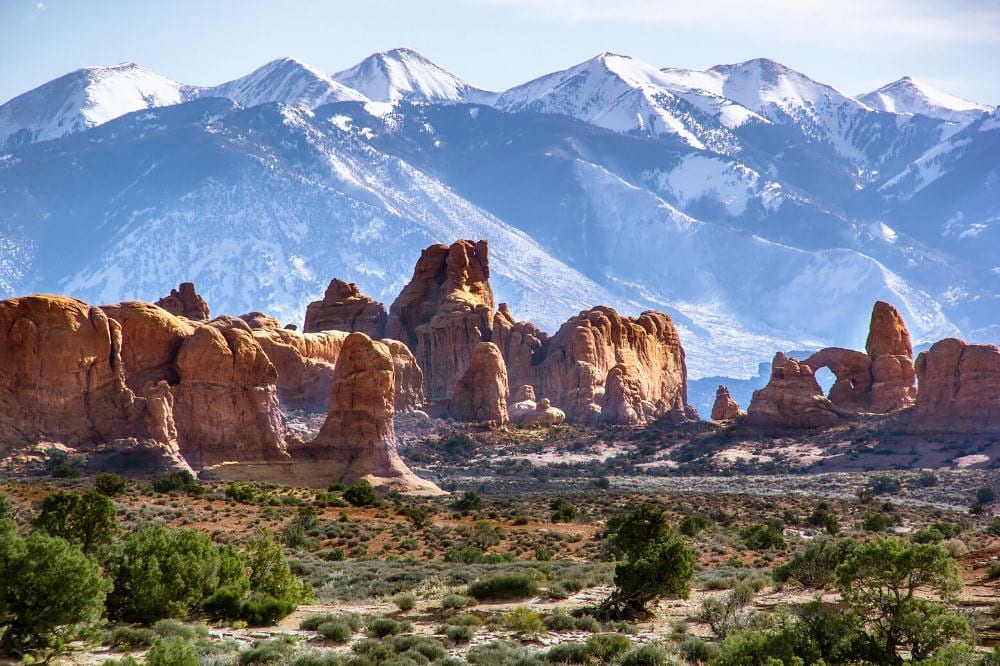
Ask many adventurers, and they’ll tell you winter is the best time to visit Arches. Temperatures can sometimes reach into the 60s or 70s when the southerly winds are blowing through. Typical temperatures, though, are around 45 degrees Fahrenheit. The trails are practically empty and wait times to get into the park are non-existent.
Pro tip: Come during the Moab Folk Festival in November to experience some rad jams during your downtime from the park.
You can check out any of the popular Arches trails without having to worry about finding parking or seeing many other people on the way. You can finally experience the famed Delicate Arch (one of the harder hikes in the park) without the hoards of people trying to get the perfect Instagram-worthy shot. Careful in the winter, though: this trail is notorious for getting very icy on some of the shaded, exposed ridges and can be quite dangerous. Bring some sort of foot traction like Yaktrax.
The only real downside to visiting in the winter is the lack of ranger programs. The visitors center is open, but that’s about it. No guided hikes are offered during this time.
Spring: The Best Time for Blooming Cacti
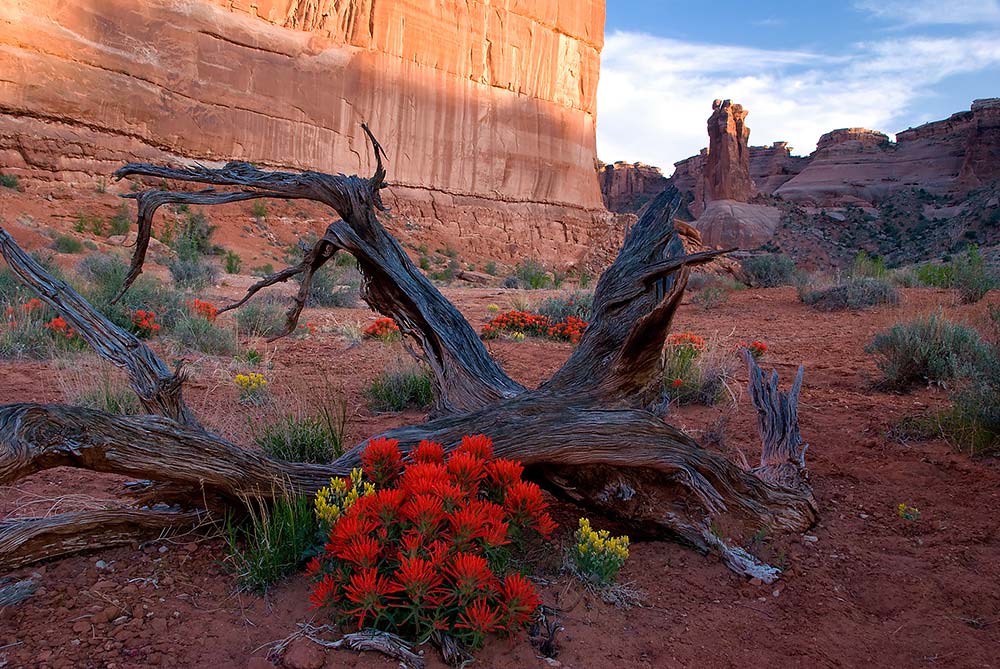
Springtime isn’t very different from fall in terms of visitation. But it’s busy for a reason: it’s an incredible time to be in the park. Spring brings out a sheer magnificence you won’t get any other time of year.
Blooming cacti and wildflowers light up the trails during the spring months. The most common cactus within the park is the prickly pear: a low-growing succulent that sprawls across the desert floor. It’s important to always stay on-trail while within the park so you don’t accidentally step on one of these guys. Arches’ desert ecosystem is kept intact by mosses and liverworts that come to life when the spring rains pass through (and during monsoon season, in late summer). A Biological soil crust also protects the fragile, loose soil that makes up most of the park and is easily destroyed with just one footprint. That’s why it’s so important to stay on the trail even if it seems like you aren’t stepping on anything.
Pro tip: If the Park is getting too crowded for you, head to other spots around the area on the weekends, like Fisher Towers and Dead Horse Point State Park.
You’re also likely to spot more animals this time of year (although you can see them year-round) basking in the warming temperatures. Reptiles and amphibians are among the most fascinating species within the park and are worth researching before you visit. The most common reptiles are the ornate tree lizard and plateau fence lizard, as well as the gopher snake (don’t worry: they’re non-venomous). There is, however, the midget-faded rattlesnake, which has an extremely toxic venom. To protect the wildlife, just give a wide berth to any animal you see on the trail. Go here for a complete list of species.
Related Read: 8 Cozy Cabin Rentals Near Moab, Utah
Summer: The Best Time to View Sunrises and Sunsets
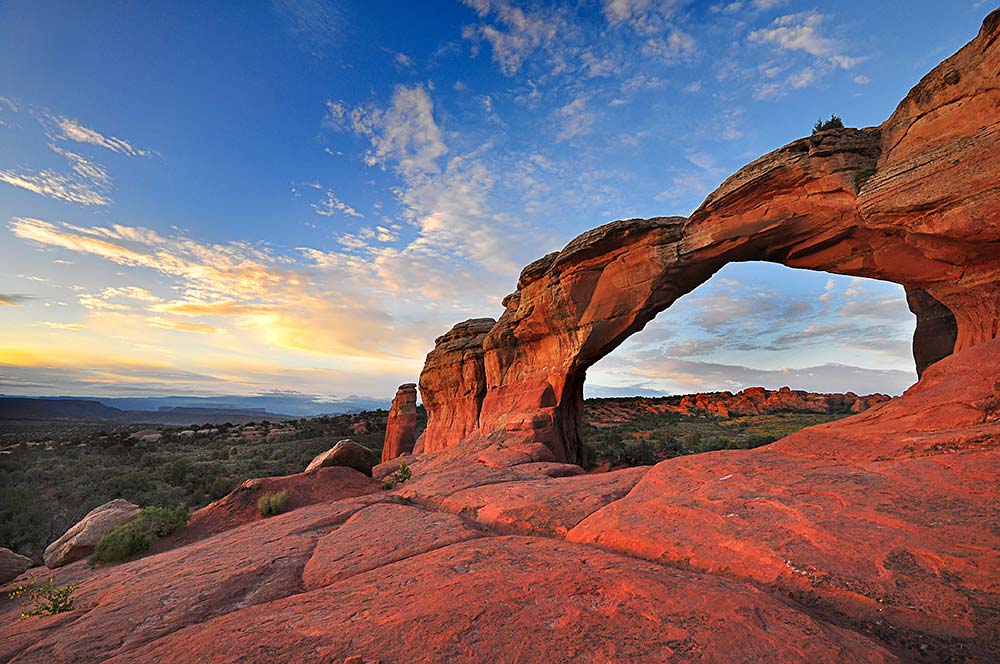
Even though summer is the most brutal time to visit Arches National Park heat-wise, it does little to dissuade the droves of people arriving to experience the incredible area. Parking lots fill up fast and the line to get into the park can sometimes be hours long. Try getting there as early as possible (earlier than the crack of dawn) or wait until late afternoon when everyone is heading out of the park after a day of hiking.
You haven’t truly experienced Arches National Park if you haven’t watched a sunrise or sunset from one of the more than 2,000 arches found within the borders. Although you might think you’d find some solitude being up so early or staying out so late, you’d be wrong. Many people want to see how the red hues change as the sun rises or sets on the glorious red rock that makes Arches so unique. (Photographers will know this is the best time to see the arches.) It’ll be crowded, but not as crowded as a daytime visit.
Pro tip: The Moab Music Festival is August-September every year and brings in huge crowds to the area. Avoid this time if you don’t want as many crowds.
A better idea is to wait until dusk, pack up a picnic, grab your headlamps, and head out on a short hike to see the starry display and hone your nighttime photography skills. Over the years, light pollution has slowly crept into the park, but the Colorado Plateau (where Arches is) remains one of the darkest skies in the contiguous 48 states. Park management had some forethought about lighting placement and takes an active role in minimizing the light pollution from the ever-increasing population just outside its boundaries. Arches National Park is considered an International Dark Sky Park and, ideally, will remain so for decades to come.
Explore More
Sign up for Weekend Wanderer to join thousands of readers getting epic travel and airbnb ideas every week.
Seen in: Arches National Park, Destinations, National Parks, Utah, West

